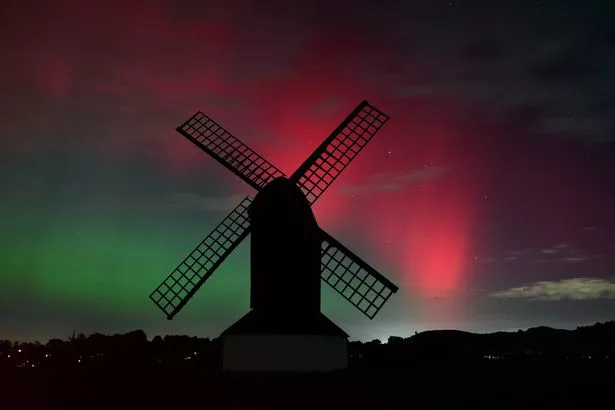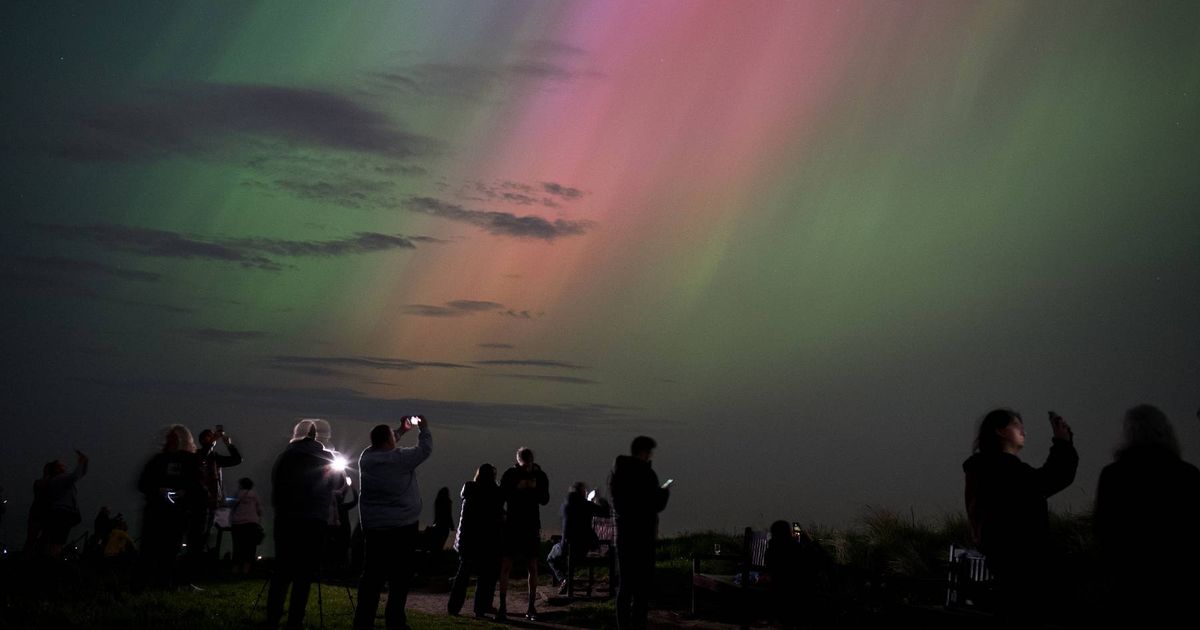A red alert has been issued by Lancaster University showing that there is a high chance of seeing the Northern Lights due to geomagnetic activity
Tim Hanlon News Reporter and Josh Pennington Content editor
20:25, 18 Oct 2025
 (Image: Getty Images)
(Image: Getty Images)
British stargazers are in for a spectacular display tonight with portions of the nation set to be illuminated by the breathtaking Northern Lights following a red alert being declared.
Aurora Borealis, commonly known as the Northern Lights, represents a natural luminous phenomenon in Earth’s atmosphere, manifesting as dancing waves or flowing curtains of colour, primarily green, pink, and red.
These mesmerising hues have fascinated humanity for centuries, and we now understand they result from charged particles originating from the Sun, known as solar winds, interacting with gases in our planet’s upper atmosphere, reports the Mirror.
Lancaster University has issued a red alert indicating a strong probability of witnessing the Northern Lights due to geomagnetic disturbances. A red alert signifies: “It is likely that aurora will be visible by eye and camera from anywhere in the UK.”
The university’s data reveals activity levels measured in nanotesla – the standard unit for magnetic field intensity – reaching beyond 200nT this evening.
 (Image: Getty Images)
(Image: Getty Images)
The Met Office additionally confirms: “The arrival of a fast solar wind, are expected to bring some enhancement to the aurora through Saturday 18 Oct and Sunday 19 Oct UTC. The best chance of viewing is over Scotland and similar geomagnetic latitudes.”
The most favourable locations to witness the spectacle are those closer to polar regions, due to the Earth’s magnetic field directing particles towards the poles. Typically, the Northern Lights are best viewed in Scotland, North England, North Wales and Northern Ireland.
However, under severe space weather conditions, the lights can be seen across the UK.
If you’ve always dreamt of seeing the Northern Lights and miss this opportunity, perhaps this winter could be the perfect time for a trip to increase your chances of witnessing it. This is because 2026 is predicted to be the best year in a decade for Aurora viewing opportunities, with January and February being the ideal months.
Next year will usher in a once-in-a-decade phenomenon; the solar maximum. This rare event sees heightened magnetic activity from the Sun, and scientists anticipate it to peak until March 2026, before subsiding again until the mid-2030s.
The great news is that you don’t need to venture into the far reaches of the Arctic to try and spot the lights. There are numerous European destinations including Iceland, Norway, Sweden and Finland where you can observe the Aurora due to their proximity to the Arctic Circle.
The sun undergoes an 11-year solar cycle, with periods of intense activity followed by a quiet phase. During its active bursts, also known as solar maximum, the sun releases charged particles that travel through space at speeds of around one million miles per hour.
Some of these particles are trapped by the Earth’s magnetic field and collide with oxygen and nitrogen atoms and molecules in our atmosphere. These atoms and molecules then release the energy they gained from the collision, emitting light at various wavelengths to create vibrant displays in the night sky.
As per Nasa, oxygen emits either a greenish-yellow light – the most common colour of the aurora – or a red light, while nitrogen typically gives off a blue light. The oxygen and nitrogen molecules also emit ultraviolet light, which can only be detected by special cameras on satellites.

